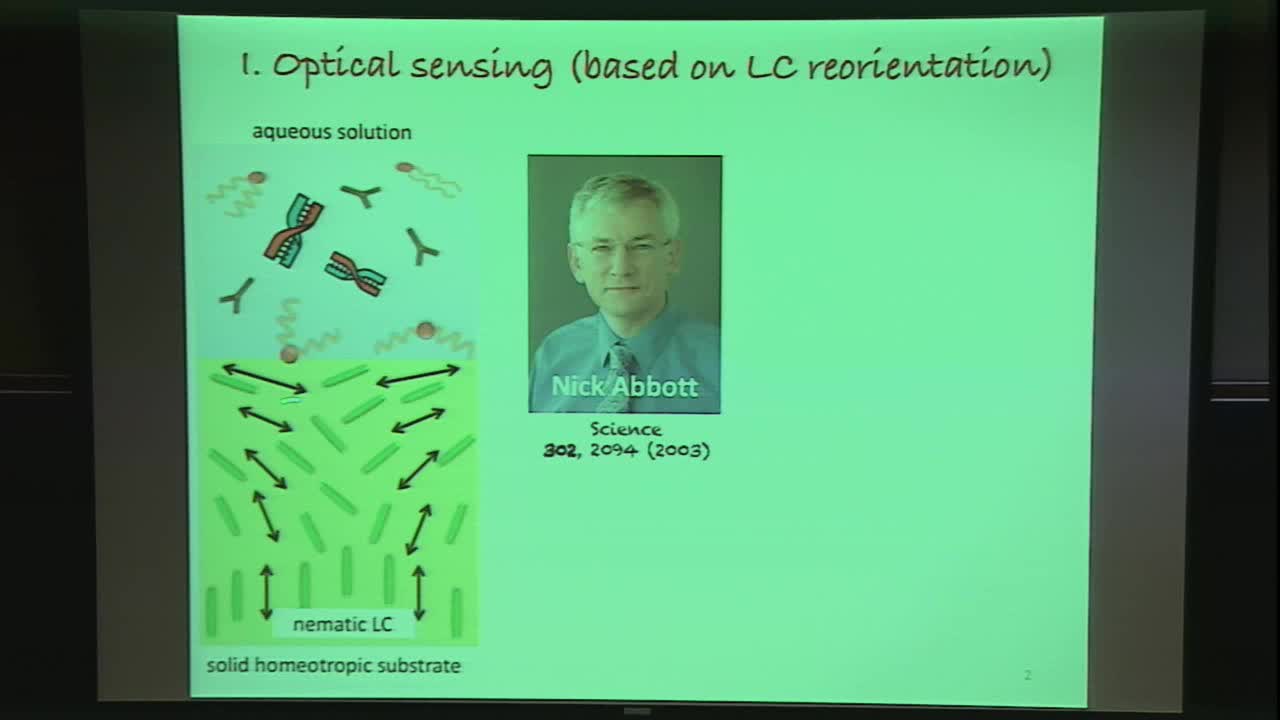Liquid crystals for sensors and organic light-emitting diodes
Presenter
February 28, 2018
Abstract
In the first part of the talk I will overview our recent progress in chemical and biological sensors based on optical effects of liquid crystals. In addition to the optical changes caused by director realignment at the presence of volatile organic compounds (VOC) or biological analytes, we will also describe novel shape changing effects. One of these is lensing in presence of chiral additives, and the other is certain lipid-induced bending of the liquid crystal film.
In the second half of the presentation I will describe the role of liquid crystals and its alignment properties in use for organic light emitting diodes. Liquid-crystalline organic semiconductors exhibit unique properties that make them highly interesting for organic optoelectronic applications. Their optical and electrical anisotropies, and the possibility to control the alignment of the liquid-crystalline semiconductor allow not only to optimize charge carrier transport, but also to tune the optical cavity of organic light-emitting diodes (OLEDs). We will describe a novel blading process for tuning the molecular orientation in a liquid-crystalline semiconductor film.
Acknowledgement: LC sensor projects were carried out in collaboration with Profs. E. Mann, J.L. West, Á. Buka, Dr. P. Popov, J. Wang, L. Honaker and J. Cumberland. The LC OLED work was done with Profs. B. Lussem and R. Twieg, and Dr. C.M. Keum.
